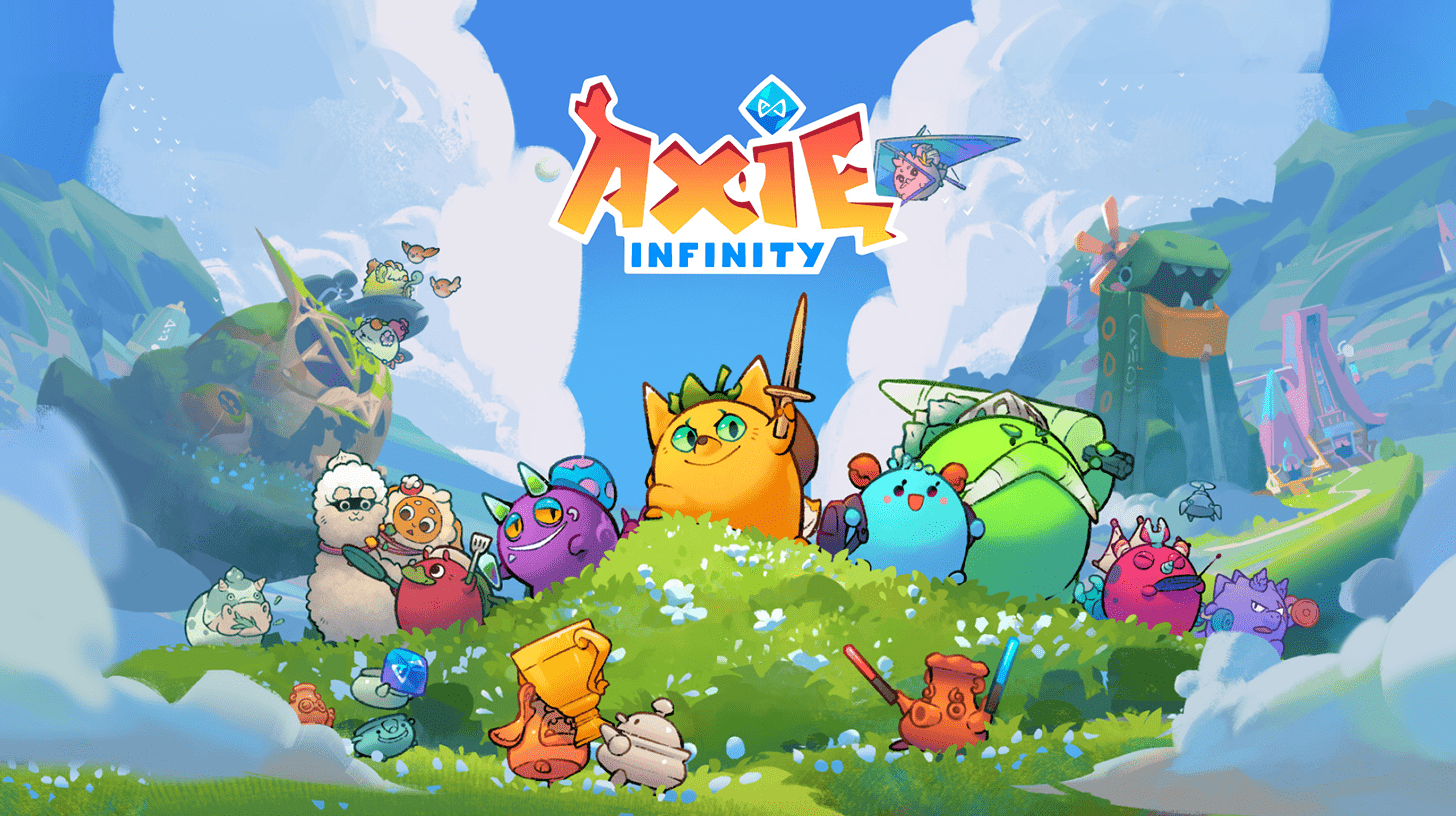The Future of Crypto Gaming: Predictions and Trends to Watch

The current state of crypto gaming is a dynamic and rapidly evolving landscape, marked by significant technological advancements and innovative economic models. Crypto games, which integrate blockchain technology and cryptocurrencies, have moved from niche curiosity to mainstream phenomenon in just a few years. Games like Axie Infinity, Decentraland, and Hamster Kombat have captivated millions, demonstrating the potential of play-to-earn and tap-to-earn models to create real-world value through virtual activities. These games have not only entertained players but also provided new avenues for income and investment, blending the worlds of gaming and finance in unprecedented ways.
Understanding future trends and predictions in crypto gaming is crucial for players, developers, and investors alike. As the industry continues to grow and evolve, staying ahead of emerging trends can offer significant competitive advantages. Predictions help stakeholders anticipate shifts in technology, market demands, and regulatory landscapes, enabling them to make informed decisions and strategic investments. For players, it means identifying new opportunities to earn and engage, while for developers, it highlights areas of innovation and potential growth.

Current Landscape of Crypto Gaming
The crypto gaming landscape is bustling with a diverse range of games that utilize blockchain technology to offer unique and engaging experiences. These games are characterized by their integration of decentralized technologies, allowing players to own, trade, and monetize their in-game assets. The growing popularity of these games highlights the increasing acceptance and enthusiasm for blockchain-based entertainment.
Key Features and Mechanics Defining the Current Market
The current market for crypto games is defined by several key features and mechanics that differentiate them from traditional games:
- Blockchain Integration
Blockchain technology ensures transparency, security, and true ownership of digital assets. Each in-game item, character, or piece of land is represented as a non-fungible token (NFT), which players can trade or sell on secondary markets.
- Play-to-Earn Models
This model allows players to earn cryptocurrency through gameplay. Players can earn tokens by participating in various in-game activities, which can then be traded for real money, making the game not just a source of entertainment but also a potential income stream.
- Tap-to-Earn Mechanics
Simpler than play-to-earn, tap-to-earn games reward players for basic interactions, such as tapping the screen. These games lower the entry barrier, attracting a wider audience who might not be familiar with complex blockchain technology.
- Virtual Real Estate
Some games have introduced the concept of virtual real estate, where players can purchase, develop, and monetize digital land. This adds a layer of investment and economic strategy to the gameplay, as virtual land can appreciate in value based on its location and development.
- Community and Social Features
Crypto games often emphasize community engagement and social interaction. Players can form guilds, participate in virtual events, and collaborate on in-game projects. This social aspect enhances player retention and creates a vibrant, interactive ecosystem.
Recent Developments and Milestones
The crypto gaming industry has seen several significant developments and milestones in recent years:
- Mainstream Recognition
Crypto games are increasingly achieving mainstream recognition, attracting millions of players and significant media coverage. This has helped to legitimize the industry and attract new investors and developers.
- Record-Breaking Sales
The sale of NFTs and virtual land in crypto games has reached record-breaking figures. Some virtual plots have sold for hundreds of thousands of dollars, highlighting the growing value and demand for digital assets.
- Institutional Investment
Major institutional investors and venture capital firms are increasingly investing in crypto gaming startups. This influx of capital is driving further innovation and development within the industry.
- Technological Advancements
Continuous improvements in blockchain technology, such as more efficient consensus mechanisms and layer 2 solutions, are enhancing the scalability and usability of crypto games. These advancements are making it easier for developers to create more complex and engaging gaming experiences.
- Regulatory Developments
Governments and regulatory bodies are beginning to take notice of the crypto gaming industry. While this brings challenges, such as the need to comply with new regulations, it also provides an opportunity for the industry to establish clearer legal frameworks and protections for players.
The current landscape of crypto gaming is vibrant and rapidly evolving. Popular games are pushing the boundaries of what is possible with blockchain technology, and key features like play-to-earn models, virtual real estate, and strong community engagement are defining the market. With continuous technological advancements and growing mainstream recognition, the future of crypto gaming looks promising, poised for further growth and innovation.

Predicted Trends in Crypto Gaming
The world of crypto gaming is on the cusp of significant transformation, driven by emerging trends and technological advancements. These trends are set to redefine how games are played, developed, and monetized, offering new opportunities for players and developers alike.
Growth of Play-to-Earn and Tap-to-Earn Models
The play-to-earn and tap-to-earn models are expected to continue their upward trajectory, transforming the way players interact with games and earn value from their gaming experiences.
- Expansion of Existing Games
Current play-to-earn and tap-to-earn games are likely to expand, adding new features, content, and rewards to retain player engagement. These expansions will include more complex game mechanics, enhanced graphics, and richer storylines, offering players a deeper and more immersive experience. As these games grow, they will attract a broader audience, including both casual gamers and serious players looking to capitalize on earning opportunities.
- Emergence of New, Innovative Titles
The success of existing play-to-earn and tap-to-earn games will inspire the development of new titles that push the boundaries of innovation. Developers will experiment with different genres, blending traditional game elements with blockchain technology to create unique and engaging experiences. These new games will introduce novel ways to earn rewards, such as integrating real-world activities, exploring new forms of virtual assets, and offering cross-platform play.
Integration of DeFi and Gaming
The integration of decentralized finance (DeFi) with gaming is set to revolutionize in-game economies, creating new financial models and earning opportunities for players.
- How Decentralized Finance Will Influence Game Economies
DeFi applications will introduce sophisticated financial mechanisms into gaming, allowing players to engage in lending, borrowing, and staking directly within the game environment. This integration will create dynamic and resilient in-game economies where players can use their digital assets to generate passive income, participate in liquidity pools, and engage in yield farming. The transparency and security of blockchain technology will ensure that these financial activities are fair and trustworthy, attracting more players to participate.
- Potential for New Financial Models and Earning Opportunities
The fusion of DeFi and gaming will lead to the creation of new financial models that offer diverse earning opportunities. For instance, players could invest in in-game assets that appreciate over time, trade NFTs on decentralized marketplaces, or earn interest on their in-game currency holdings. Additionally, games might introduce governance tokens, allowing players to have a say in the development and direction of the game, further aligning their interests with the success of the game. These new financial models will not only enhance player engagement but also provide real-world financial benefits, making gaming a viable source of income for many.
The predicted trends in crypto gaming highlight the significant potential for growth and innovation in the industry. The continued expansion of play-to-earn and tap-to-earn models, coupled with the integration of DeFi, will transform how games are played and monetized, offering players unprecedented opportunities to earn and engage with digital assets. As these trends unfold, they will shape the future of gaming, creating a more dynamic, inclusive, and financially rewarding environment for players worldwide.

Technological Advancements Shaping the Future
Technological advancements are at the forefront of the evolving crypto gaming landscape, driving improvements in scalability, security, and immersive experiences. These advancements are poised to enhance the overall gaming experience and expand the potential of blockchain-based games.
Improvements in Blockchain Scalability and Efficiency
One of the primary challenges facing blockchain technology in gaming is scalability. As the popularity of crypto games increases, the demand on blockchain networks grows, leading to congestion and higher transaction fees. Technological innovations are addressing these issues and improving the efficiency of blockchain networks.
Impact of Layer 2 Solutions and Other Scalability Technologies
Layer 2 solutions, such as sidechains and off-chain transactions, are designed to alleviate congestion on the main blockchain by processing transactions off the primary network. These solutions significantly increase transaction speeds and reduce costs, making blockchain gaming more accessible and enjoyable for players. Additionally, other scalability technologies, such as sharding, break the blockchain into smaller, more manageable pieces that can process transactions independently, further enhancing network efficiency.
Enhanced Security Measures
As the value and popularity of digital assets in crypto games grow, so does the importance of securing these assets. Enhanced security measures are crucial to protect players' investments and maintain trust in the gaming ecosystem.
Developments in Securing Digital Assets and Transactions
Innovations in cryptographic techniques and multi-signature wallets are improving the security of digital assets. Multi-factor authentication (MFA) and biometric verification are becoming standard practices to ensure that only authorized users can access their accounts and assets. Regular smart contract audits and the implementation of advanced encryption methods further safeguard transactions and reduce the risk of fraud and hacking.
VR, AR, and AI Integration
The integration of virtual reality (VR), augmented reality (AR), and artificial intelligence (AI) is set to revolutionize the gaming experience, making it more immersive, interactive, and personalized.
The Role of Immersive Technologies and Artificial Intelligence in Enhancing Gaming Experiences
VR and AR technologies enable players to experience games in entirely new ways, creating immersive environments where digital and physical realities merge. These technologies allow for more interactive and engaging gameplay, where players can physically interact with the game world. AI enhances these experiences by creating more responsive and intelligent non-player characters (NPCs), adapting gameplay to individual player styles, and generating dynamic game content. The combination of VR, AR, and AI will lead to more sophisticated and compelling gaming experiences, attracting a wider audience and pushing the boundaries of what is possible in crypto gaming.
Technological advancements in blockchain scalability, security, and immersive experiences are shaping the future of crypto gaming. These innovations will not only enhance the performance and accessibility of blockchain games but also create more engaging and secure gaming environments. As these technologies continue to evolve, they will play a crucial role in the ongoing transformation of the gaming industry, offering players richer, safer, and more immersive experiences.

Regulatory Landscape and Its Impact
As the crypto gaming industry grows, it faces an increasingly complex regulatory landscape. Understanding and navigating these evolving regulations is crucial for the sustainable development of crypto games and the protection of players and developers alike.
Evolving Regulations and Compliance
The regulatory environment for cryptocurrencies and blockchain technology is constantly changing. Governments and regulatory bodies worldwide are taking a closer look at these technologies to ensure consumer protection, prevent fraud, and maintain financial stability. These evolving regulations will significantly impact the future of crypto gaming.
How Changing Laws Will Affect Crypto Gaming
New regulations can bring both challenges and opportunities. For instance, stricter regulations may require developers to implement more robust security measures and compliance protocols, which can increase operational costs. On the other hand, clear and consistent regulatory frameworks can enhance the credibility and legitimacy of crypto games, attracting more mainstream players and investors. Developers will need to stay informed about regulatory changes and be prepared to adapt their games and business models to comply with new laws. This might include obtaining necessary licenses, adhering to anti-money laundering (AML) and know-your-customer (KYC) regulations, and ensuring transparent and fair gameplay practices.
Navigating Global Regulatory Challenges
The global nature of crypto gaming means that developers and players must navigate a patchwork of regulations that vary by country and region. Successfully managing these regulatory challenges is essential for the growth and sustainability of the industry.
Strategies for Developers and Players to Adapt to Varying Regulations
Developers can adopt several strategies to navigate the complex regulatory landscape:
- Jurisdictional Compliance
Ensure that the game complies with the legal requirements of each jurisdiction in which it operates. This may involve setting up localized versions of the game or establishing legal entities in different regions to meet specific regulatory demands.
- Legal Counsel and Advisory
Engage with legal experts who specialize in blockchain and cryptocurrency regulations. These advisors can provide guidance on navigating regulatory changes and ensuring compliance.
- Transparent Operations
Maintain transparency in operations, including clear communication about how in-game assets are managed and how player data is protected. Transparency builds trust with players and regulators alike.
- Proactive Engagement with Regulators
Developers can proactively engage with regulatory bodies to seek clarity on existing laws and provide input on the development of new regulations. This collaboration can help shape a regulatory environment that supports innovation while protecting consumers.
Players also have a role to play in navigating regulatory challenges:
- Staying Informed
Players should stay informed about the regulatory status of crypto games in their region. Understanding local laws can help players make informed decisions about which games to participate in and how to manage their in-game assets.
- Choosing Compliant Platforms
Opt for games and platforms that prioritize regulatory compliance and player protection. Reputable developers will often communicate their compliance efforts and provide resources to help players understand the regulatory landscape.
The regulatory landscape for crypto gaming is evolving rapidly, with significant implications for the industry. Developers and players must stay informed and adopt strategies to navigate these changes effectively. By ensuring compliance and engaging with regulators, the crypto gaming industry can continue to grow and innovate while maintaining the trust and safety of its community.

The Role of Community and Social Interaction
In the evolving landscape of crypto gaming, community and social interaction play pivotal roles in driving game success and player engagement. The integration of community features and social elements creates a more immersive and rewarding experience for players, fostering loyalty and enhancing the overall appeal of the game.
Growing Importance of Player Communities
Player communities have become a cornerstone of successful crypto games. These communities, formed around shared interests and goals, are crucial for the longevity and growth of a game.
How Community Engagement Drives Game Success
Engaging with the player community can significantly impact a game's success. Active and vibrant communities create a sense of belonging and investment among players, encouraging them to spend more time and resources on the game. Developers who actively listen to community feedback and incorporate player suggestions into game updates and features can build stronger, more loyal player bases. Additionally, engaged communities often act as organic marketing channels, promoting the game through word-of-mouth and social media, attracting new players and expanding the game's reach.
Social Features and Collaboration
The rise of social gaming experiences and community-driven content is transforming how players interact with each other and the game world. Social features and collaborative elements enhance the gaming experience by making it more interactive and immersive.
The Rise of Social Gaming Experiences and Community-Driven Content
Social features such as in-game chat, forums, and social media integration enable players to connect and communicate, fostering a sense of camaraderie and competition. Games that encourage collaboration, such as forming guilds, alliances, or teams, create opportunities for players to work together towards common goals. These collaborative efforts can lead to richer, more engaging gameplay experiences, as players strategize, share resources, and support each other.
Community-driven content also plays a significant role in enhancing the gaming experience. Allowing players to create, share, and monetize their content—such as custom skins, levels, or mods—adds a layer of personalization and creativity to the game. This user-generated content keeps the game fresh and dynamic, as players continuously introduce new ideas and elements. Blockchain technology further empowers creators by enabling them to retain ownership of their digital assets and earn rewards for their contributions, fostering a thriving ecosystem of player-driven innovation.
The role of community and social interaction is paramount in the success of crypto games. Active player communities and robust social features enhance player engagement, loyalty, and satisfaction. By fostering collaboration and supporting community-driven content, developers can create dynamic and immersive gaming experiences that resonate with players and drive the growth of the game.

Economic Opportunities and Challenges
The intersection of crypto and gaming presents numerous economic opportunities for developers and players, but it also comes with financial risks and considerations. Understanding both aspects is crucial for anyone looking to succeed in this evolving industry.
New Revenue Streams for Developers
The integration of blockchain technology into gaming has opened up a variety of new revenue streams for developers. These opportunities go beyond traditional monetization strategies, offering innovative ways to generate income.
Exploring Monetization Strategies and Revenue Models
Crypto gaming enables developers to implement diverse monetization strategies. One prominent model is the sale of non-fungible tokens (NFTs), where unique in-game items, characters, or virtual real estate can be bought, sold, and traded. These NFTs provide a continuous revenue stream as their value can appreciate over time and generate transaction fees with each trade.
Another lucrative strategy is the play-to-earn model, where players earn cryptocurrency through gameplay. Developers can create in-game economies where players spend real money to purchase assets or enhance their gaming experience, driving revenue. Additionally, developers can earn from transaction fees on in-game marketplaces, where players trade items and assets.
Subscription models and premium content access are also viable. Offering exclusive features, content, or early access to new releases for a subscription fee can provide a steady income. Moreover, integrating decentralized finance (DeFi) mechanisms such as staking and yield farming within the game can attract investment from players, further boosting revenue.
Financial Risks and Considerations
While the economic opportunities in crypto gaming are substantial, there are also significant financial risks and considerations that developers and players must understand.
Understanding the Economic Risks Involved in Crypto Gaming
One of the primary risks in crypto gaming is market volatility. The value of cryptocurrencies and NFTs can fluctuate dramatically, affecting both developers’ and players’ investments. A sudden drop in value can lead to significant financial losses.
Security is another critical concern. Despite blockchain's inherent security features, surrounding infrastructure like wallets and exchanges can be vulnerable to hacks and fraud. Ensuring robust security measures is essential to protect digital assets and maintain player trust.
Regulatory risks also pose challenges. As governments around the world develop and implement regulations for cryptocurrencies and blockchain technology, compliance costs and legal uncertainties can impact profitability. Developers must stay informed about regulatory changes and ensure their operations are compliant with local laws to avoid potential legal issues.
Additionally, the speculative nature of NFT and cryptocurrency investments can lead to economic bubbles. Overvaluation and speculative trading can result in unstable market conditions, where a market correction could lead to substantial financial losses for both players and developers.
The economic landscape of crypto gaming offers exciting opportunities for generating revenue through innovative monetization strategies. However, it is equally important to be aware of and mitigate the financial risks involved. By balancing these opportunities and challenges, developers and players can navigate the crypto gaming space more effectively and sustainably.

Potential for Mainstream Adoption
The integration of blockchain technology into gaming holds significant promise for mainstream adoption. However, achieving widespread acceptance requires overcoming several barriers and fostering strategic partnerships with traditional gaming companies.
Barriers to Entry and Solutions
While the potential of crypto gaming is vast, there are notable barriers to entry that must be addressed to attract traditional gamers and broader audiences.
Simplifying User Experience to Attract Traditional Gamers
One of the main obstacles to mainstream adoption is the complexity of blockchain technology. For many traditional gamers, the process of setting up digital wallets, purchasing cryptocurrency, and navigating decentralized platforms can be daunting. Simplifying these processes is crucial for lowering the entry barrier.
Solutions include developing user-friendly interfaces and seamless onboarding experiences that guide new users through the setup process with minimal friction. Integrating familiar payment methods, such as credit cards and PayPal, for purchasing in-game assets and currency can also make the transition smoother for traditional gamers. Additionally, offering detailed tutorials, support resources, and in-game guides can help demystify the blockchain elements and enhance user confidence.
Partnerships with Traditional Gaming Companies
Collaborations between crypto gaming projects and traditional gaming companies can play a pivotal role in bridging the gap and accelerating mainstream adoption.
How Collaborations Can Bridge the Gap Between Traditional and Crypto Gaming
Strategic partnerships can bring together the strengths of both worlds—traditional gaming's vast audience and established reputation, and crypto gaming's innovative technology and economic models. Traditional gaming companies can leverage blockchain technology to enhance their games with true ownership of digital assets, decentralized economies, and new monetization strategies.
These collaborations can take various forms, such as integrating blockchain features into existing popular games, co-developing new titles that incorporate crypto elements, or offering exclusive blockchain-based content and rewards to traditional game players. By partnering with well-known gaming companies, crypto gaming projects can gain credibility and visibility, making it easier to attract traditional gamers who may be skeptical about blockchain technology.
Furthermore, traditional gaming companies can benefit from the unique engagement and revenue opportunities that crypto gaming offers. The play-to-earn and tap-to-earn models can introduce new ways for players to interact with games and earn rewards, driving higher player retention and monetization. Blockchain technology also enables innovative game mechanics, such as cross-game asset interoperability and player-driven governance, which can enhance the gaming experience and foster deeper player involvement.
The potential for mainstream adoption of crypto gaming is significant, but it requires addressing barriers to entry and fostering partnerships with traditional gaming companies. By simplifying user experiences and leveraging strategic collaborations, the crypto gaming industry can bridge the gap between traditional and blockchain-based gaming, paving the way for broader acceptance and growth.

Case Studies of Emerging Trends
The world of crypto gaming is rapidly evolving, with several innovative games leading the way and setting new standards in the industry. By examining these examples, we can highlight their contributions, understand their success stories, and learn valuable lessons.
Examples of Games Leading the Way
Innovative crypto games are pushing the boundaries of what is possible with blockchain technology. These games introduce new mechanics, economic models, and community interactions that set them apart from traditional gaming.

Axie Infinity
Axie Infinity is one of the most successful play-to-earn games, where players collect, breed, and battle fantasy creatures called Axies. Each Axie is an NFT, giving players true ownership of their digital pets. The game's economy is powered by two main tokens, SLP (Smooth Love Potion) and AXS (Axie Infinity Shards), which players can earn through gameplay and trade on various exchanges. Axie Infinity has demonstrated the potential of blockchain to create sustainable in-game economies that provide real-world value to players.

Decentraland
Decentraland offers a virtual world where players can buy, develop, and monetize parcels of virtual land. Each parcel is an NFT, providing true ownership and the ability to trade land on secondary markets. Decentraland supports a wide range of activities, from hosting virtual events to running businesses within its metaverse. Its decentralized nature and robust economy have made it a hub for digital creativity and commerce.

Hamster Kombat
Hamster Kombat combines the tap-to-earn model with engaging character progression. Players start with a basic hamster character and evolve it into a powerful CEO of a crypto exchange through continuous tapping and upgrades. Points earned in the game may potentially be exchanged for the cryptocurrency $HMSTR at a predetermined rate in the future. Hamster Kombat's innovative mechanics and promise of real-world rewards have attracted millions of players and generated significant interest.
Success Stories and Lessons Learned
Analyzing the success stories of leading crypto games provides insights into what has worked well and what challenges have been encountered.
What Has Worked
- User-Centric Design
Successful crypto games prioritize user experience, making it easy for players to get started and engage with the game. Intuitive interfaces, clear tutorials, and responsive customer support are critical components that have contributed to the success of these games.
- Strong Economic Incentives
Games that offer compelling economic incentives, such as significant earnings through gameplay, have seen higher player retention and engagement. By providing real-world value, these games attract a diverse audience, including both casual and serious gamers.
- Community Building
Effective community-building strategies, such as active social media presence, regular updates, and community events, have helped games maintain a loyal player base. Games that actively involve their communities in decision-making processes and reward player contributions tend to perform better.
Challenges and Areas for Improvement
- Scalability Issues
Many successful games have faced challenges related to scalability, such as network congestion and high transaction fees. Addressing these issues through technological advancements and optimized blockchain solutions is crucial for sustaining growth.
- Regulatory Compliance
Navigating the regulatory landscape has been a significant challenge for some games. Ensuring compliance with local laws and regulations while maintaining the decentralized nature of the game requires careful planning and adaptation.
- Security Concerns
Ensuring the security of digital assets and transactions remains a critical concern. Games must continuously invest in robust security measures to protect against hacks and fraud, safeguarding player investments and maintaining trust.
The case studies of emerging trends in crypto gaming highlight the importance of innovative mechanics, strong economic models, and active community engagement. By learning from the success stories and addressing the challenges encountered, developers can create more robust, scalable, and user-friendly crypto games that appeal to a broader audience and drive the industry's growth forward.

Conclusion
The future of crypto gaming is promising, with the potential for significant growth and innovation. As blockchain technology continues to evolve, we can expect more sophisticated and engaging gaming experiences. The integration of decentralized finance (DeFi) within games will create dynamic and resilient in-game economies, offering players new ways to earn and interact. Simplifying the user experience and addressing regulatory challenges will be crucial for attracting a broader audience and achieving mainstream adoption. Collaborations between traditional gaming companies and crypto projects will further bridge the gap, bringing the benefits of blockchain technology to a wider range of players.
While the potential of crypto gaming is immense, it is not without its challenges. Market volatility, security concerns, and regulatory uncertainties pose significant risks that developers and players must navigate. However, by leveraging technological advancements and fostering strong community engagement, the industry can overcome these hurdles. The continued innovation in game mechanics, economic models, and social features will drive the growth of crypto gaming, creating a more dynamic, inclusive, and financially rewarding environment for players worldwide.
In conclusion, the intersection of crypto and gaming represents a transformative shift in the digital entertainment landscape. By understanding and addressing the opportunities and challenges ahead, developers and players can contribute to the evolution of this exciting industry, paving the way for a future where gaming and earning are seamlessly intertwined.
